

Aspergers Disorder
This psychiatric label that is now defunct (as of May 2013).
Individuals who would have been assigned the "Aspergers Syndrome" label in the past
now receive the "Autistic Spectrum Disorder" label for their condition.
This page was written in April 2013. It is archived at BehaviorAdvisor.com for historical reference.
Right now, outside my window, there is an April shower that will bring the May flowers (at least here near the north 45th parallel). Something else will arrive in May: The 5th edition of the Diagnostic and Statistical Manual of the American Psychiatric Association (DSM-5). With it will come changes in how mental illnesses in children and youth were categorized in the previous edition of the text (DSM-IVtr).
This week (April 20th, 2013), we visit Asperger’s Syndrome… while we still have the time to do so. It is one of the disorders that will be thrown on the psychological scrap heap when DSM-5 takes the stage. (To the best of my knowledge, Aspergers will remain as-is for the time being in the ICD-10 manual…The World Health Organization’s International Classification of Diseases that is revised on a different time schedule than the DSM.)
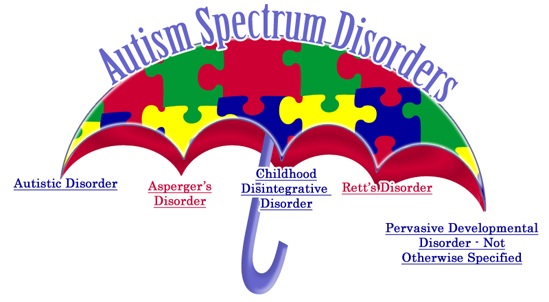
It’s not that kids with Aspergers don’t have a disability, rather the label given to their disability has changed somewhat. During April 2013, the condition is a subcategory of Autistic Spectrum Disorder. Sometime in May, it’s no longer a variation on Autism. Instead, it becomes a level or echelon of Autism. In the popular verbiage, it will be known as “high functioning autism”. Will people still use the terms “Aspergers” and “Aspies”? Certainly; it’s in our everyday vernacular… a phraseology that will probably extinguish in time and someday be an obscure historical reference like other psychological and special education terms such as: “hysteria”, “minimal brain dysfunction” and “patterning”.
Here’s what’s in store for us B-Listers today:
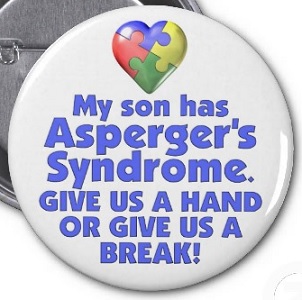
My recent experience with a youngster with Asperger’s Syndrome
I met “Frank” on a bicycle tour. Introduced to me by a friend, this cheerful, outgoing fellow came to know that I was a professor of special education with expertise in mental health and behavioral disorders. A couple of weekends later, I found myself sipping wine and sampling the cheese & veggie platter at this gentleman’s stately home, having been invited to a small gathering there. I would soon come to know the primary reason for my invitation as he asked me to spend some time with his son. He wanted me to assess whether “… everything is OK with Evan” (name changed).
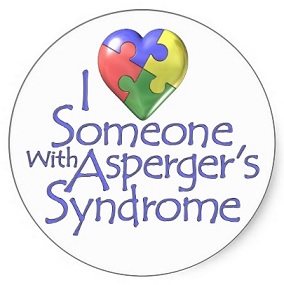
Inquiring further, I found out that Frank had concerns about odd behaviors displayed by his son. While the pediatrician was also concerned, Frank’s wife, a nurse, was unwilling to consider any possibilities of deviation from the childhood norm. Evan was in a side room off of the living room where guests were engaged in conversation… the women looking for common interests in each other; the men sizing each other up by asking about each other's professions and trying to tell the best humorous story while building up their images in those episodes.
Being surrounded by self-important folks who talked the intricacies of finance and business consulting, I was more than happy to seek out the isolated youngster who walking slowly back and forth in front of the large bay window, alternately opening and wringing his hands while staring out through the glass… far from the music room where the other pre-teens had gathered to play piano and engage in video games on their electronic devices. I too looked out the window and asked Evan if any of the expensive vehicles in the expansive driveway appealed to him. Our exchange was initially polite, though awkward and strained. I noticed a lack of the “3 Es” in his commentary: Energy, enthusiasm and engagement in the boy’s responses, UNTIL he struck upon the topic of trains. His monologue showed his in-depth knowledge of railroad operations, schedules, track and engine maintenance, and so forth.
Noticing a communicative style consistent with Asperger’s syndrome, I attempted to get him to change topic to sports, neighborhood music, and other areas of interest to most kids his age. Those conversations were short-lived and returned to tressle bridges, track gauge size, and the need for high-speed rail systems. While remaining within a general area of study, his knowledge base within that area was quite expansive.
The other kids of similar ages appeared to have no desire to invite Evan to joy them in their preparation for a “show” with which to later entertain the adults. During the meal, I noticed that Evan was not with us during meal time, and seized the opportunity to escape "adult conversation" to look for him. I found him in the large foyer at the front door, pacing back and forth between the staircase and entry-way table… a distance of about 20-25 feet. My greeting did not stop his alternating path walk, although he dipped his head as he paced by me and said hello. Just then, his father joined us. He said to his son: “Tell Mr. McIntyre why you do this.” The boy, feeling awkward, ashamed, and “caught in the act” said “I don’t know.” Evan was then ordered to stop his pacing, and he quickly complied.
Conversations have continued between the father and I who wishes to have his son assessed for Asperger’s/ASD. The blockage to this assessment is his wife, a nurse, who refuses to consider the possibility of ASD, insisting that her child is “a bit different” and blames the school for his social and varied academic performance there. The husband and school are not willing to engage in a contrary-view push for evaluation. The boy, 4 years after my initial contact with him, receives no special services or supports. At school, he is an isolate. He is bullied by others for being a "nerd", "weirdo", and some new terms with which I'm unfamiliar.
As a special educator, it is difficult to witness a child in need of extra supports failing to receive them. Perhaps someday when I’m King of the World.
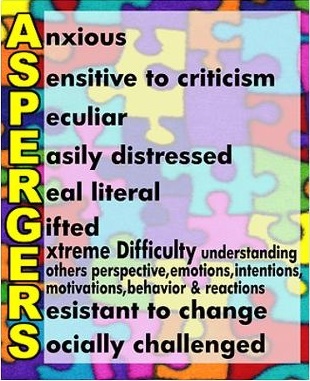
A questioning commentary on the upcoming change in DSM labeling
Marked by normal-to-above intelligence and language abilities, but the possession of limited interests and impaired social skills, in 1994, Aspergers was included as a separate diagnosis in the Diagnostic and Statistical Manual of the APA (DSM-IVtr). Less than 20 years later, it no longer exists in the DSM manual. This decision was based primarily on research that failed to find a distinquishing difference between Aspergers Syndrome and "high functioning autism". In a comparision of conditions, 40% of youngsters with Aspergers (and other ASD labels) had their symptoms overlap with those of "high functioning autism". Perhaps the question that dwells in my mind has also entered yours: "What about the other 60% of those kids?", but bigger brains than mine have determined that Aspergers and high functioning autism are one-and-the-same. We will have to adjust our conceptions of what we know to be "true".
Transitions are difficult times for humans. Change, while inevitable in our lives, requires adjustments to our comfort levels. Whether positive, neutral, or negative in our perceptions, discombobulation still occurs to some degree. For many parents of these youngsters, this change will require a re-orientation in many ways. For some parents, the Aspergers label signaled that their child had "quirky" behaviors, but was not "Autistic". They could point to many famous and highly successful individuals with the same proclivities as their children. With the advent of DSM-5, many face a new frontier: Hearing their child described as autistic, albeit in the "high functioning range". What perhaps is most important in the transition for these folks is remembering that while the label may change, it's still the same kid that they love so dearly.
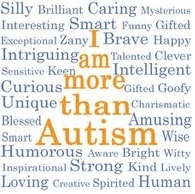 ...................................................................
...................................................................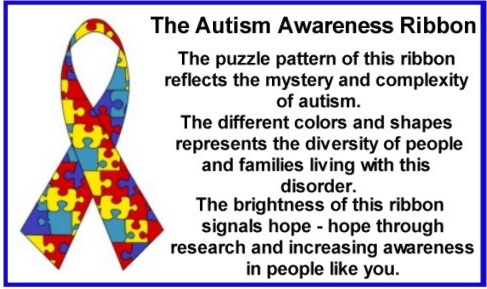
Looking for a nice overview of the Asperger’s Syndrome condition? Here's the link:www.BehaviorAdvisor.com/AspergersSyndrome.html
Here's are the links to a 2-part video on Aspergers Syndrome:
Part 1: http://silo.hunter.cuny.edu/LhSumGDG
Part 2: http://silo.hunter.cuny.edu/tuYEf44b
OH... and....
I invite you to take a listen to excerpts from a CD composed, played and sung by a mother and teacher of kids with ASD (whatever the range or variation). Designed to teach younsters with ASD to manage their emotions and make good behavior choices in stressful situations, this CD is gaining recognition as an effective approach for teaching social skills and emotional management.
You can listen to excerpts from each and every one of Niki's 27 songs at: www.nikischomasmusic.com
If you agree with me that these tunes would be of great benefit to your kids, you can return to this page and click on the CD cover image (below) to purchase it. Otherwise, enjoy the music.
From the U.S.? Click on this Left Side CD cover .................................................... From outside the States? Click on this right-side CD cover
?Wondering how you might use the music in your social skills and emotion management sessions?
!Take a look at the instructional objectives!
Song Title |
Global Objectives |
Accidents Happen |
To learn how to react appropriately when “accidents happen” |
All I Can Do |
To recognize the importance of doing and being your best. |
Back and Forth |
To identify the basic components of reciprocal communication. |
Beautiful You |
To articulate the positive qualities that every individual has that makes them beautiful. |
Breathe |
To learn how to breathe as a way to cope with stress or anger. |
Breathe Through the Change |
To identify how change change can be difficult, and how to learn to appropriately cope with changes in routine. |
Choose |
To recognize and feel empowered in the ability to make good choices. |
Confidence |
To define what it means to have confidence. |
Different People |
To recognize that different people need different things to be successful in life. |
Empathy |
To define the term empathy, and illustrate various ways of demonstrating empathy with others. |
I Am Assertive |
To define what it means to be assertive. |
I Can Wait |
To recognize the importance of patiently waiting. |
I Get Angry |
To identify various things that trigger anger, and appropriate ways to cope with anger. |
Let My Worries Fly Away |
To use the visualization strategy of pretending your worries are flying away as a coping mechanism. |
Listen |
To define what it means to listen. |
Look ‘Em in the Eye |
To articulate various social communication behaviors, and the importance of eye contact |
Make a Plan |
To problem solve how to make a plan to successfully manage tasks. |
Other People’s Words |
To learn how to cope with the words that other people say. |
Pay Attention |
To recognize the importance of paying attention. |
Picture a Happy Place |
To use the visualization strategy of picturing a happy place during stressful situations. |
Power in Change |
To identify the importance of changes in routine, and how to successfully navigate change. |
Power to Change the World |
Students will recognize that they have the ability to change things in their world. |
Recognize the Signs |
To recognize the physiological signs that are associated with stress. |
Safe Place |
Students will learn how to visualize a “safe place” as a coping mechanism when dealing with stress and/or anxiety. |
Self-Talk |
Students will learn how to positively talk themselves through various situations. |
Stand Up |
To recognize the importance of standing up for yourself and others in an appropriate way. |
Version of Me |
Students will recognize the importance of being the best “version” of themselves, and describe how this is defined by making good choices and doing their best. |
Song Title |
Global Objectives - Educational and/or Clinical Settings |
Accidents Happen |
Students will demonstrate the ability to identify what an “accident” is, and demonstrate ability to respond appropriately toward others when accidents occur. |
All I Can Do |
Students will analyze and define how to demonstrate their “personal best”, how to respond to “disappointment and/or making mistakes”, and positively cope with natural outcomes. |
Back and Forth |
Students will analyze and demonstrate the various components of effective communication. |
Beautiful You |
Students will analyze different ways to positively communicate about themselves and others, and will generate individual lists of positive attributes that describe themselves individually as well as others. |
Breathe |
Students will identify various triggers that cause them stress, identify and describe a healthy coping strategy, and implement the strategy when applicable. |
Breathe Through the Change |
Students will identify and describe how changes or transitions in their routine can lead to stress, and explain how positive self-talk will help them successfully transition throughout their day(s). |
Choose |
Students will recognize and feel empowered at the realization that they have the power to choose, and that there are more positive results when good choices are made. |
Confidence |
Students will define the term “confidence”, evaluate various examples of what it means to have or not demonstrate having confidence, and will generate and demonstrate a list of “confident behaviors. |
Different People |
Students will recognize the differences between individual supports that people need for different reasons. |
Empathy |
Students will define and illustrate what “empathy” means and demonstrate how to be empathetic to others. |
I Am Assertive |
Students will define the concept of “assertiveness”, and provide examples how to appropriately “assert” themselves in various situations. |
I Can Wait |
Students will understand the importance of waiting, identify various reasons why it is difficult to wait, and comprehend and demonstrate the importance of waiting. |
I Get Angry |
Students will identify what triggers their anger and how to appropriately cope with their anger. |
Let My Worries Fly Away |
Students will identify the triggers that might cause worrying, and visualize their worries “flying away” as they learn to successfully learn to cope with their worries. |
Listen |
Students will identify the importance of listening and illustrate what “listening” looks like in terms of appropriate behavior. |
Look ‘Em in the Eye |
Students will identify and describe the various aspects of successful communication that involve eye contact, proximity, and turn taking. |
Make a Plan |
Students will understand how to “make a plan” in terms of the steps they need to take in order to accomplish and problem-solve by breaking down things into smaller steps. |
Other People’s Words |
Students will identify how other people’s words can affect them and will recognize how to cope with how they feel in response. |
Pay Attention |
Students will recognize the importance of paying attention and identify the various behaviors that are evident when they are “paying attention”. |
Picture a Happy Place |
Students will visualize a place that makes them happy as a means to learning a new coping skill when stressed or upset. |
Power in Change |
Students will recognize their own struggle with change in response to their feelings of a loss of control, and will be empowered to learn that the control they desire to have is within them as they learn that they have “power” in dealing with change. |
Power to Change the World |
Students will recognize that they have the ability to change things in their world. |
Recognize the Signs |
Students will identify various things that might trigger their anxiety; how to recognize the signs of how anxiety affects them, and identify various healthy ways they can help themselves in these situations. |
Safe Place |
Students will learn how to visualize a “safe place” as a coping mechanism when dealing with stress and/or anxiety. |
Self-Talk |
Students will learn how to positively talk themselves through various situations. |
Stand Up |
Students will identify and define what it means to “stand up” for what they believe in terms of appropriately advocating for themselves and others. |
Version of Me |
Students will recognize the importance of being the best “version” of themselves, and describe how this is defined by making good choices and doing their best. |
Niki's Biography:
Niki Schomas began writing music that adults and children would enjoy listening to while she was in college. The benefits for children became evident immediately in her own classroom shortly after her graduation. Now, drawing on her years of experience as a musician, her 15 years as a special educator, and her skills learned from being a parent of two energieic young boys, she set out to find a new way of incorporating music into her curriculum.
With her son’s diagnosis of autism driving her passion, she also realized the urgency of properly teaching not only mainstream children, but those in her classroom, using her guitar and her voice. After researching preexisting programs, and drawing on children’s natural love for music, Niki realized the huge lack of quality in the area of social skills instruction.
The result is a 27-song album entitled “Beautiful You” released in December 2012. Drawing on concepts such as learning new coping strategies, teaching children to navigate social situations, and having them understand the natural ambiguities of life, Niki’s music is being used by parents and educators alike. Niki wrote and produced the album to be utilized in the classroom by general and special education teachers and for families at home. Her purpose allows teaching of social concepts through music to be is inspirational, effective, and most of all fun.
A Thank You Note from Niki
“I wanted to say a sincere thank you to everyone who purchased my album. I am both humbled and motivated to write more music. You enthusiastically verified that this material helps our children at home and at school to handle life's situations with more emotional comfort and physical skill. Please write to me if you have ideas for future songs. In fact, it was requests for social skills songs from a school social worker and our students that had a huge influence in the creation of “Beautiful You”.
As a parent, when the initial shock of my son's ASD diagnosis became a reality, I committed myself to getting whatever therapeutic supports for him that I could afford. Fulfilling that pledge involved an insane amount of driving to different therapies.
While spending so much time in the car, I wanted to find a way to make the drive therapeutic and enjoyable as well. Also, given the enormous amount of work that was required of me in helping him, I wanted a break. Putting a disk into the cd player of my car was, and continues to be, one of the most efficient ways I have ever helped my son.
There have been various times when he was escalating, and without any prompting on my part, he began to quote lyrics of my songs to help talk himself down. Students in my school have demonstrated the same response to the music.
Essentially the intention behind the music was and is to pre-teach coping skills, and has proven to be effective when my son and students utilize the lyrics learned from the songs to regulate their behavior. Furthermore, my favorite comments made in regard to the visualization songs on the album have been from parents referencing the ways in which they personally have benefitted from the music. As a parent, educator, and musician, I feel that the greatest compliments regarding “Beautiful You” acknowledge the ability this music has to bridge the gap between school and home, therapist and clients, and parents and their children.
In conclusion, I thought I would share a favorite quote from a former student who said “I have autism, and autism is a part of me and my life. When I get in a bad mood or I don’t feel happy, what makes me calm down is singing ‘Breathe.’ I just sing it, and it’s like my whole body relaxes.” http://beaconnews.suntimes.com/lifestyles/11939499-423/12-year-old-with-autism-will-sing-during-concert-at-dupage-childrens-museum.html”
From the U.S.? Click on this Left Side CD cover .................................................... From outside the States? Click on this right-side CD cover

| Fetch the Intervention Strategies Index |

Author: Tom McIntyre, Ph.D. DoctorMac@BehaviorAdvisor.com